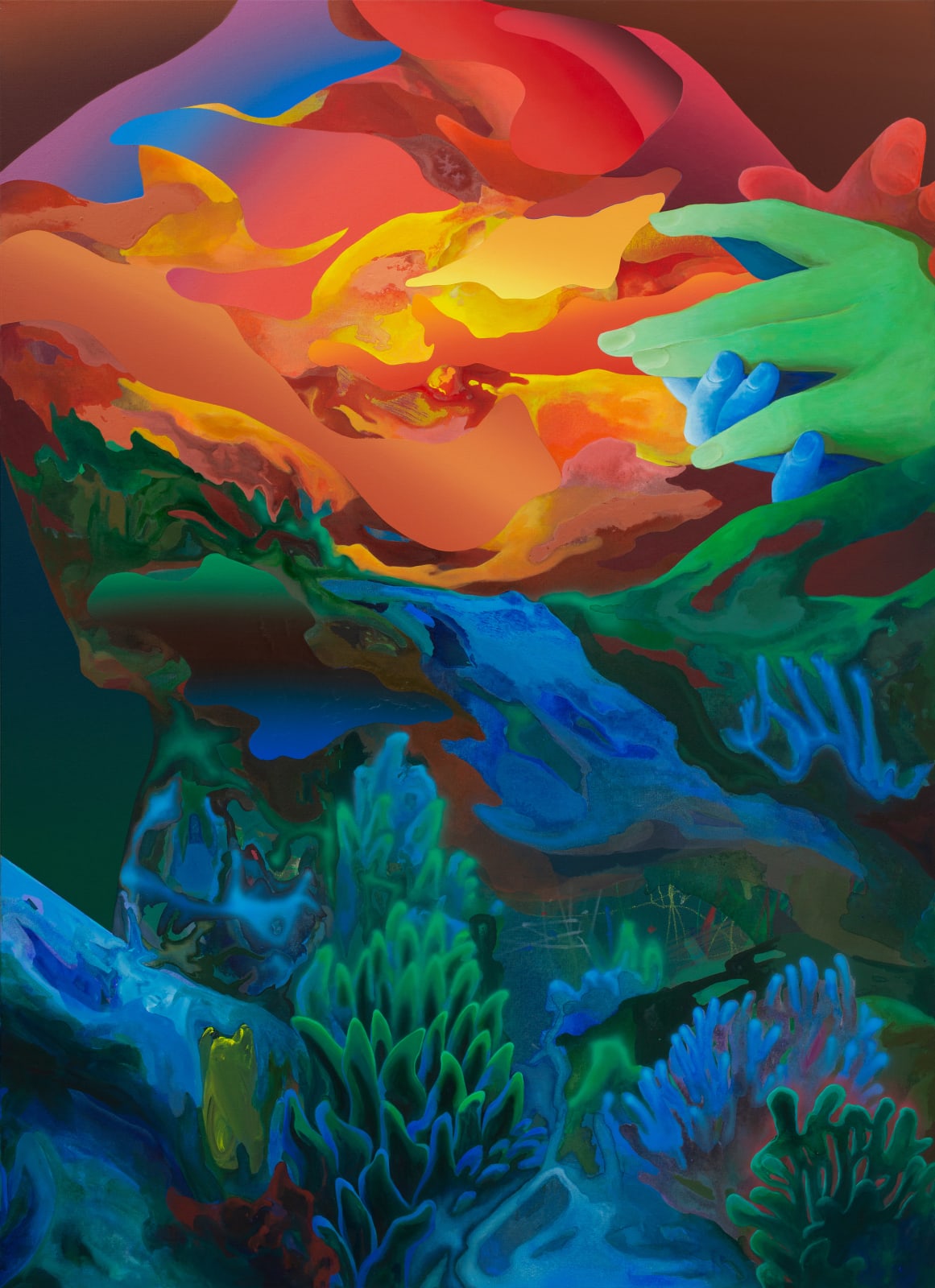PAINTING
 panel 2 of triptych. 180 x 130 cm
panel 2 of triptych. 180 x 130 cm
 chick chick keep it hidden. From sunset to midnight blues
chick chick keep it hidden. From sunset to midnight blues
 panel 1 of triptych. 100 x 70 cm
panel 1 of triptych. 100 x 70 cm
 panel 3 of triptych. 150 x 130 cm
panel 3 of triptych. 150 x 130 cm
Siiri Jüris Swedish-Estonian, b. 1992
Also available as a triptych
Further images
This painting is originally part of a triptych. Contact the gallery if you are interested in seeing the left and right panels.
The entire triptych sells for 225,000 sek.
Exploring human relationality and cohabitation through the act of playing. Game culture and folklore are rich in variation – not only are games ever-changing in time, but different age and social groups and even neighboring villages might have their versions of the same game. How widely a game has been played in the world is reflective of human diversity – many are characteristic to just a small geographical area, while others are universal. In addition, each game type has its function, be it entertainment, celebration, ritual, or for strengthening unity and a sense of belonging in a community. Many games that were popular centuries ago had belief-related, ritualistic, and even magical origins. Swinging and tugging games, as just one example, were believed to promote agricultural prosperity and good health. Many adult cultural customs carried over to children’s games. Games today generally have more entertaining purposes.
Conceptually and technically a play – a play on childhood nostalgia and on the need to find footing in dubious times by exploring one’s past as well as a play with painted matter. For this series, Jüris has collected a selection of Estonian folk game instructions found in the national archives and added to them her memories and interpretations. Jüris paints in an intuitive, slow, and layered manner. The will of the acrylic material dictates the artistic process. She treats the painted matter as an agent in its own right, allowing unexpected forms and patterns to emerge as the paint flows across the canvas. As the painterly landscape grows and evolves, bodily shapes and synergies are identified and brought forth through found shapes painted in a highly controlled manner. Jüris takes advantage of the characteristics of the paint, such as its vibrancy and dullness as well as its fluency and transparency, to create a sense of beautiful apprehension – a subtle conflict between joy and unease, as well as a conflict between classical painting, arts and crafts and post-internet aesthetics.
Join our mailing list
Stay up-to-date on all the news from our gallery: exhibitions, artist talks, concerts and much more.
* denotes required fields
We will process the personal data you have supplied in accordance with our privacy policy (available on request). You can unsubscribe or change your preferences at any time by clicking the link in our emails.







